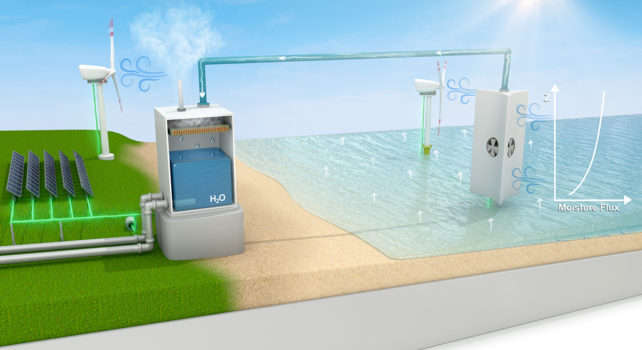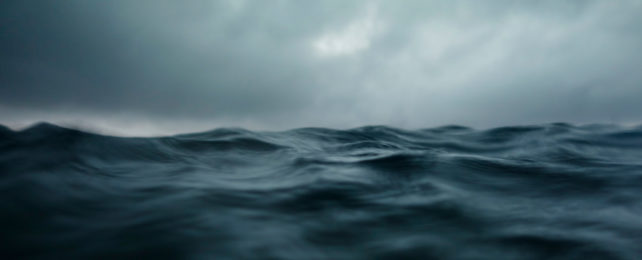There's not enough fresh water to go around on planet Earth, and it's a problem that's expected to only worsen in the coming years.
To meet growing demand, recycling and restricting our water will only get us so far. Scientists will need to find new sources of this life-sustaining liquid to meet our needs.
One currently untapped source is the water vapor above the oceans, which is almost limitless as far as supplies go. A new study outlines how harvesting structures could be used to convert this vapor into drinkable water.
"Eventually, we will need to find a way to increase the supply of fresh water as conservation and recycled water from existing sources, albeit essential, will not be sufficient to meet human needs," says civil and environmental engineer Praveen Kumar, from the University of Illinois Urbana-Champaign.
"We think our newly proposed method can do that at large scales."

Measuring some 210 meters (689 feet) in width by 100 meters (328 feet) tall – roughly the height of a large cruise ship – the proposed structure mimics the natural water cycle in the way that it transports, condenses, and collects water.
Moist air would be transported from just above the ocean surface to a nearby shore, where cooling systems could condense the water vapor into a liquid. All of this would run on renewable wind or solar energy, the team says.
While the researchers haven't provided specifics of their design, they did crunch the numbers on the quantity of extractable moisture across 14 study sites around the world. Just one of these installations could potentially meet the average daily drinking water needs of around 500,000 people.
That could be a huge addition to desalination plants already operating in many places around the world, to remove the dissolved salts from seawater.
"It hasn't been done before, and I think it is because researchers are so focused on land-based solutions – but our study shows other options do, in fact, exist," says atmospheric scientist Francina Dominguez, from the University of Illinois Urbana-Champaign.
Fresh water – which is required for drinking, bathing, and irrigation – makes up just 3 percent of the world's water, most of which is too polluted or inaccessible for convenient use. While we've seen several promising projects that can increase our access to fresh water sources, we're still waiting for technology that can really make a difference at scale.
The scarcity of safe, drinkable water often hits the poorest people in the world the hardest, with knock-on effects that extend into health, security, and income. Something like the system proposed here has the potential to make a massive difference without damaging ecosystems or the surrounding environment.
As part of their study, the researchers also considered the potential consequences of climate change, and dry areas getting drier – but they concluded that their system would still be sustainable even as the world warms.
"The climate projections show that the oceanic vapor flux will only increase over time, providing even more freshwater supply," says Rahman. "So, the idea we are proposing will be feasible under climate change."
"This provides a much needed and effective approach for adaptation to climate change, particularly to vulnerable populations living in arid and semi-arid regions of the world."
The research has been published in Scientific Reports.
